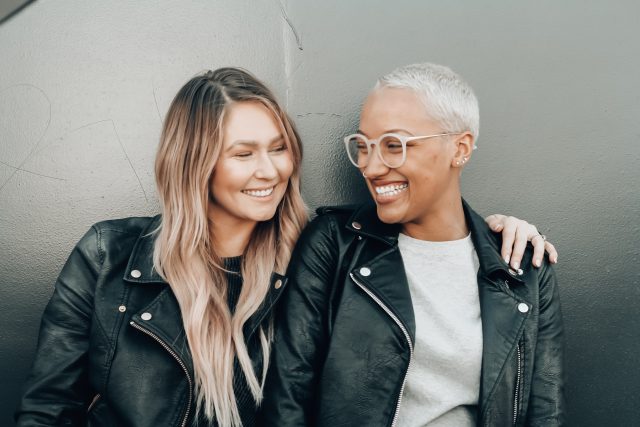 Circles of Closeness: Friendship and Intimacy
Circles of Closeness: Friendship and Intimacy
By Tina Tessina
There are different levels of closeness in friendships. Some people become friends because circumstances bring them together. Perhaps you worked with someone and ate lunch together fairly often, but when one of you left the job, the friendship didn’t survive. Or you were quite friendly with a neighbor who moved away, and your contact ended.
You probably know what’s like to get together with a close friend who you haven’t seen for a long time. It’s as though you were never apart. Your connection is based on many shared experiences, values, and feelings, and it remains strong. Circumstantial friendships don’t provide the same type of bond, but that doesn’t mean they’re not valuable.
It’s likely that when you enter a new environment, you will meet people you enjoy, but don’t feel a deep connection to. These friendships are like pleasant conveniences, where both parties benefit by the contact, but neither has the interest to pursue the friendship further. The relationship may feel vaguely uncomfortable or wrong, as if there is something “false” about it.
You may enjoy having lunch with colleagues at work, chatting with them about work problems and gossip, and you may even meet some of them before class to exercise. But when you change jobs, most of those friendships are replaced by connections with colleagues in the new office.
There is no need to feel guilty if one or more of your friendships feels circumstantial. It is very helpful for both of you to have one another at this moment; you can enjoy whatever you share and move on when it’s over. Most likely your friend has similar benign feelings of friendship toward you, and the parting is not more than mildly sad for either of you. Don’t deprive yourself of this pleasant contact because it doesn’t meet some expectation, and don’t try to force it to be more than it is. There’s no reason to back away from a temporary, congenial connection.
 Circles of Friends
Circles of Friends
Every friendship is different, and you deserve to have a full spectrum of friends in your life. You can picture your friendships as a series of concentric circles, one inside the other. At the outermost circle are the people you like but haven’t gotten to know well: folks you’ve met at work, church, or other groups; friends of friends and other pleasant acquaintances. Some of these people will never be closer to you than they are now. Some of them, however, become closer to you and move into the next circle. These are people you see fairly often and like quite a bit. They may be circumstantial friends who are meaningful to you at the time, but who don’t stay around. Or they may be members of a group you spend time with, but not special friends of yours. If you’re particularly fond of a casual friend, it’s worth your while to make an effort to get closer. Let an acquaintance know you’d like to have more personal contact by inviting him or her to coffee after a meeting or to a party at your house.
Perhaps your relationship will move into the third circle: developing friends. You’ll both take the opportunity to know each other better and learn whether you have much in common. With some effort, and some luck, the friendship may eventually move into the fourth circle: close friends. It usually takes some time for a relationship to develop this far, but when it does, you both will share a long-term connection.
Nothing enriches life like friendships. You probably remember the old adage, “Make new friends, but keep the old. One is silver, and the other gold.” As your life develops, you learn how true this is. With plenty of friends around, you can make sure that you get your full measure of delight, support, and companionship.
 Different Strokes
Different Strokes
We all have different categories of people in our lives. There are family members, friends, co-workers, colleagues, and acquaintances. And within each of these categories, there are levels of closeness. In your family, for example, you may feel closer and more comfortable with one sister or cousin than you are with another. Or, in your circle of friends, some may be much more reliable and warm than others. Even in business, some colleagues may be true friends, while others are more distant. The differences in these relationships determine how much distance or closeness will work in them. Knowing how to differentiate between levels of friendhips will make a big difference.
Circles of Closeness
To create a mental picture of how the various kinds of intimacy exist in your life, you can imagine your relationships as organized into a series of concentric circles, with you in the center of all of them.
The center circle: Intimacy: The people you consider most important to you, who are your closest friends and family, fill the center circle, the smallest one. The circle is small because relatively few people meet the requirements to get into the “inner circle.” It is reserved for those who are special: your closest friends, your spouse or partner, and your family.
The second circle: Warm friendship: The circle just outside that one, the second circle, is for warm friends and family members whom you like, but perhaps do not know well enough to trust completely, or who have some characteristics that make being closer impossible. This can be true for people you like a lot, but who are far away, or who can’t be trusted to keep commitments or to respond when you need them.
Third circle: Friendly connections: This circle is for people you know and like, but don’t yet know well enough to consider them warm friends. These people may be friends of your friends or family members, or other people you like and enjoy spending time with, but with whom you have not yet made an individual connection. Some of these acquaintances may very well move on into your second circle after some time and experience, others may drift away.
 Fourth circle: Circumstantial friends: These people may be neighbors, co-workers, other parents in your child’s pre-school, or people who are fun to talk to while you work out at the gym, but aren’t much closer in your personal life. These people are friendly and convenient for doing certain things together (for example, a co-worker with whom you have lunch) but if the circumstances change (you change jobs or move away), the friendships don’t last. Once in a while, a circumstantial friend becomes a personal friend, and moves into the third circle, or even closer.
Fourth circle: Circumstantial friends: These people may be neighbors, co-workers, other parents in your child’s pre-school, or people who are fun to talk to while you work out at the gym, but aren’t much closer in your personal life. These people are friendly and convenient for doing certain things together (for example, a co-worker with whom you have lunch) but if the circumstances change (you change jobs or move away), the friendships don’t last. Once in a while, a circumstantial friend becomes a personal friend, and moves into the third circle, or even closer.
Fifth circle: Acquaintances: This final circle is for people you’ve recently met and haven’t had a chance to screen for more intimate circles, or friends of friends, or other people you hardly know, but consider friendly. You may get to know some of these people better as time goes on.
Being Selective
Each of these circles calls for a different level of privacy. If you have carefully considered who to allow into the innermost circle, for example, it will contain the people with whom you are the most comfortable being intimate. These are the people with whom you share your personal thoughts, your secrets, your sexuality and your living space (just how close you get depends on your personal preferences, and on how considerate and caring they are).
With each successive circle, the level of intimacy and sharing of your private self diminishes. A new work colleague in the outermost circle, for example, will probably know only general information about you, and very little about your personal life.
Author Bio: Tina B. Tessina, Ph.D. (www.tinatessina.com) is a licensed psychotherapist in S. California since 1978 with over 40 years’ experience in counseling individuals and couples and author of 15 books in 17 languages, including Dr. Romance’s Guide to Finding Love Today; It Ends With You: Grow Up and Out of Dysfunction; The Ten Smartest Decisions a Woman Can Make After Forty; Love Styles: How to Celebrate Your Differences, The Real 13th Step, How to Be Happy Partners: Working it Out Together and How to Be a Couple and Still Be Free. She writes the “Dr. Romance” blog (drromance.typepad.com), and the “Happiness Tips from Tina” email newsletter. Online, she’s known as “Dr. Romance” and offers courses at GenerousMarriage.com. Dr. Tessina appears frequently on radio, TV, video and podcasts. She tweets @tinatessina
Article Source: https://EzineArticles.com/expert/Tina_Tessina/34086
http://EzineArticles.com/?Circles-of-Closeness:-Friendship-and-Intimacy&id=10460824
